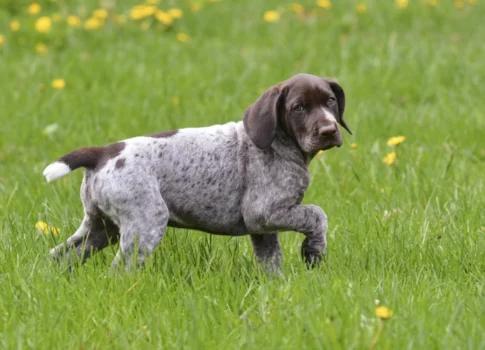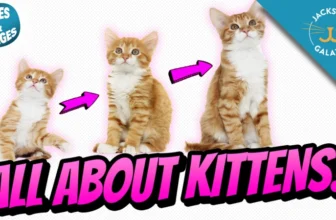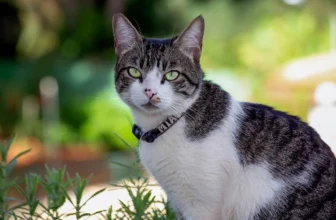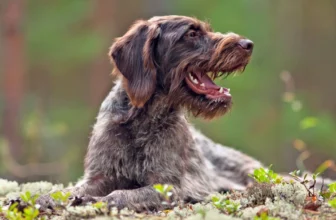As animal lovers, we are fascinated by the physical traits and characteristics of different breeds. However, have you ever wondered how these traits are passed on from generation to generation? Genetics and inheritance play a crucial role in determining the physical appearance of an American Wirehair. In this article, we’ll take a closer look at how genes work, the different types of inheritance, and how these factors impact the physical traits of American Wirehairs. Join us as we unravel the mysteries of genetics and inheritance in the context of American Wirehairs.
Brief Overview of Genetics and Inheritance
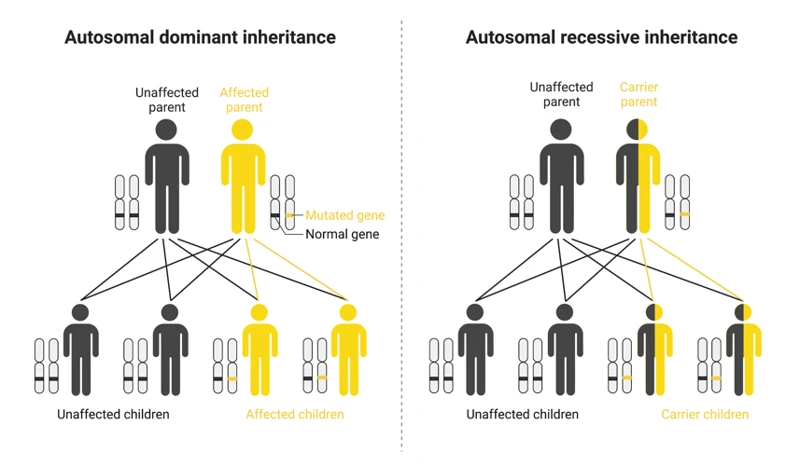
Genetics is the study of heredity, the passing of characteristics from one generation to the next. Heredity occurs through the passing of genes, which are the basic units of heredity and are made up of DNA sequences. Each individual has two copies of each gene, one from each parent. These genes determine the physical traits, such as coat type or eye color, that an individual will possess. Understanding the basics of genetics and inheritance is crucial in breeding for specific traits in American Wirehairs.
Inheritance is the process by which genetic information is passed down from parents to offspring. There are three main types of inheritance: autosomal dominant, autosomal recessive, and X-linked. Autosomal dominant means that only one copy of the gene needs to be present in order for the trait to be expressed. Autosomal recessive means that two copies of the same gene must be present in order for the trait to be expressed. X-linked inheritance is a type of inheritance that is carried on the X chromosome and can affect males more than females.
When it comes to breeding American Wirehairs, it is important to understand the inheritance of physical traits such as the wirehair coat, body type, and eye color and shape. These traits are determined by various genes and it is possible to predict the likelihood of offspring possessing these traits using Punnett squares.
However, it is also important for breeders to consider the genetic health issues that may be present in their breeding lines. Genetic testing can help identify these issues and allow breeders to make informed decisions about which cats to breed. It is also important to maintain genetic diversity in breeding programs to avoid issues with inbreeding and genetic health.
Understanding genetics and inheritance is crucial in breeding American Wirehairs. By considering various factors such as physical traits, genetic health, and diversity, breeders can produce healthy and desirable cats that meet breed standards. To learn more about genetic testing for American Wirehair breeders, please check out this article.
What are Genes?
Genes are an essential part of understanding genetics and inheritance, and they play a vital role in determining physical traits in American Wirehairs. Essentially, genes can be described as “instructions” that dictate the development and function of all living organisms. These genetic factors act as blueprints for everything from eye color to body shape. To learn more about the specific genes that dictate physical traits in American Wirehairs, check out our article on selective breeding and wirehair genetics. It’s important for breeders and pet owners alike to have a basic understanding of genes and how they work to better understand their furry friends’ physical characteristics and health.
What is Inheritance?
Inheritance is the process by which genetic information is transferred from parents to their offspring. It is the reason why children tend to resemble their parents in terms of physical characteristics. In American Wirehairs, this process is responsible for the inheritance of a variety of traits, such as coat type, body type, and eye color.
There are two main types of inheritance:
- Mendelian inheritance: This type of inheritance is based on the laws of segregation and independent assortment proposed by Gregor Mendel. In Mendelian inheritance, traits are determined by individual genes that are passed down from parent to offspring.
- Non-Mendelian inheritance: This type of inheritance is more complex and involves the interaction of multiple genes and environmental factors that can influence the expression of certain traits.
In American Wirehairs, most traits are determined by Mendelian inheritance. This means that each trait is controlled by one or more genes, and each parent contributes one version of each gene to their offspring. The combination of genes determines the final physical appearance of the offspring.
It’s important to note that not all traits are determined solely by genetics. Environmental factors such as diet and living conditions can also play a role in the development of certain traits. However, genetics is a major factor in the inheritance of physical characteristics in American Wirehairs.
Understanding the basics of inheritance is important for breeders who want to produce healthy and predictable litters of American Wirehairs. By using Punnett squares and genetic testing, breeders can better predict the traits of their offspring and make informed decisions about breeding pairs. Additionally, understanding inheritance can help owners better care for their pets and understand the potential health issues that may arise as a result of their genetics.
For more information on genetic health issues in American Wirehairs, check out our article on common genetic diseases, and for more on the importance of genetic diversity in breeding, read our article on genetic diversity in American Wirehair breeding.
How Do Genes Affect Physical Traits?
Genes play a crucial role in determining physical traits. They are made up of DNA sequences responsible for producing proteins that control various characteristics in living organisms. Each gene carries specific information that determines various physical traits such as hair color, eye color, height, body type, and much more.
How Do Genes Affect Physical Traits?
To understand how genes affect physical traits, we should first know about dominant and recessive genes. In simple terms, dominant genes are responsible for producing a particular physical feature, while recessive genes are not expressed when paired with a dominant gene.
When two organisms produce offspring, each parent passes down one copy of each of their genes to the offspring. The offspring then has a pair of genes, one from each parent. If the two genes are the same, the offspring is said to be homozygous for that gene. If the two genes are different, the offspring is heterozygous.
Inherited physical traits are expressed based on whether they are dominant or recessive. If an offspring receives two dominant genes for a trait (one from each parent), the trait will be expressed. If an offspring receives one dominant and one recessive gene, the dominant trait will be expressed because the dominant gene masks the recessive gene. However, if an offspring receives two copies of the recessive gene, the recessive trait will be expressed.
To better understand how genes affect physical traits, the following table illustrates some examples:
| Physical Trait | Dominant Gene | Recessive Gene | Expression in Offspring |
|---|---|---|---|
| Hair color | Brown | Blonde | If offspring receives two brown genes or one brown and one blonde gene, hair color will be brown. Only if offspring receives two blonde genes will hair color be blonde. |
| Eye color | Brown | Blue | If offspring receives two brown genes or one brown and one blue gene, eye color will be brown. Only if offspring receives two blue genes will eye color be blue. |
| Height | Tall | Short | If offspring receives two tall genes or one tall and one short gene, height will be tall. Only if offspring receives two short genes will height be short. |
As seen in the examples above, genes play an essential role in determining various physical traits. The expression of these traits depends on whether the genes are dominant or recessive, and whether the offspring is homozygous or heterozygous for a specific gene.
Types of Inheritance
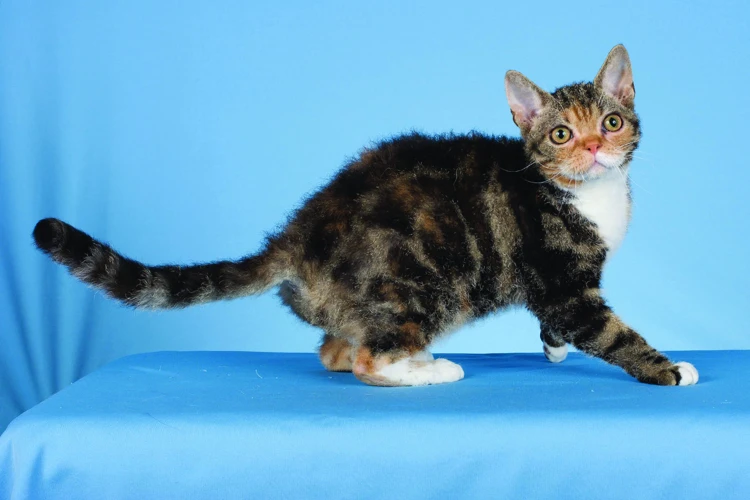
When it comes to genetics and inheritance, there are three main types of inheritance that are important to understand: Autosomal Dominant Inheritance, Autosomal Recessive Inheritance, and X-linked Inheritance. Each of these types of inheritance have different patterns of inheritance and can impact the likelihood of certain traits being passed down from one generation to the next.
Autosomal Dominant Inheritance: In Autosomal Dominant Inheritance, a single copy of a gene that causes a certain trait to be expressed is sufficient for that trait to be expressed. This means that if a parent has the dominant gene for a certain trait, there is a 50% chance that their offspring will also inherit that gene and express the trait. For example, let’s say that we have a gene for brown eyes that is dominant over a gene for blue eyes. If one parent has brown eyes and the other parent has blue eyes, their offspring would have a 50% chance of inheriting the brown eye gene and having brown eyes.
Autosomal Recessive Inheritance: In Autosomal Recessive Inheritance, a trait is only expressed if an individual inherits two copies of the recessive gene for that trait, one from each parent. This means that if two carriers of the recessive gene have children, there is a 25% chance that their offspring will inherit two copies of the gene and express the trait. An example of a recessive trait in American Wirehairs is the gene for straight hair, which is recessive to the gene for the wirehair coat.
X-linked Inheritance: X-linked Inheritance is a type of inheritance where genes are located on the X chromosome. This means that females, who have two X chromosomes, are more likely to be carriers of X-linked traits than males, who only have one X chromosome. Additionally, if a male inherits an X-linked gene from his mother, he is guaranteed to have that trait because he only has one X chromosome. An example of an X-linked trait in American Wirehairs is the gene for white fur, which is recessive and located on the X chromosome.
Autosomal Dominant Inheritance
When discussing genetics and inheritance, one important concept to understand is autosomal dominant inheritance. This type of inheritance occurs when a single copy of a mutated gene, inherited from one parent, is enough to cause a specific trait or disorder. The specific gene mutation is dominant over the non-mutated gene. This means that if a parent carries the dominant gene, there is a 50% chance they will pass it on to their offspring. Let’s delve deeper into this fascinating topic and explore how it applies to American Wirehairs.
Autosomal Recessive Inheritance
Autosomal Recessive Inheritance is another type of inheritance pattern, in which a disease or trait is passed down to an offspring only if they inherit two copies of the mutated gene from both parents. In other words, if an individual carries only one copy of the mutated gene, they will not develop the trait or disease, but can still pass it down to their offspring.
To further understand Autosomal Recessive Inheritance, let’s take an example of a genetic disease that affects American Wirehairs called Polycystic Kidney Disease (PKD). PKD occurs when there are multiple cysts or fluid-filled sacs in the kidneys, which can severely impact their functioning. This condition is caused by a mutated gene called PKD1 or PKD2.
How does Autosomal Recessive Inheritance work for PKD?
The healthy gene for PKD is dominant over the mutated gene, which means, if only one parent carries the mutated gene, the offspring will not develop PKD. However, if both parents carry one copy of the mutated gene, their offspring have a 25% chance of inheriting two copies of the mutated gene, leading to the development of PKD.
To better understand this probability, we can use an Autosomal Recessive Inheritance punnett square. Punnett Squares are graphical representations used to determine the probability of inheritance of a certain trait or disease.
Here’s an example of a punnett square for PKD:
| PKD gene (M) | Healthy gene (N) | |
|---|---|---|
| PKD gene (M) | MM (Offspring inherits 2 copies of the mutated PKD gene and will develop PKD) | MN (Offspring carries only one copy of the mutated PKD gene and will not develop PKD but can pass it down to their offspring) |
| Healthy gene (N) | MN (Offspring carries only one copy of the mutated PKD gene and will not develop PKD but can pass it down to their offspring) | NN (Offspring inherits healthy genes and will not develop PKD) |
As seen from the punnett square, if both parents carry one copy of the mutated gene, they have a 25% chance of producing offspring with PKD, a 50% chance of producing offspring who are carriers but will not develop PKD, and a 25% chance of producing completely healthy offspring.
It’s important to note that Autosomal Recessive inheritance can be tricky as carriers who do not develop the disease or trait can still pass it down to their offspring. It is essential for breeders to perform genetic tests on their American Wirehairs for any inherited diseases and make informed breeding decisions to prevent the passing down of diseases and disorders to future generations.
X-linked Inheritance
X-linked inheritance, also known as sex-linked inheritance, involves genes located on the X chromosome. In mammals, females have two X chromosomes while males have one X and one Y chromosome. This means that inheritance of X-linked traits follows a different pattern in males and females.
When a gene for a specific trait is located on the X chromosome, it is said to be X-linked. X-linked traits can be either dominant or recessive, just like autosomal traits. However, due to the differences in sex chromosomes between males and females, X-linked inheritance can have distinct patterns.
In females, X-linked traits follow the same rules as autosomal traits. If a female inherits one copy of a dominant X-linked allele (represented by XD), she will express that trait. If she inherits one copy of a recessive X-linked allele (represented by Xd), she will not express the trait, but will still be a carrier. If she inherits two copies of the recessive X-linked allele (represented by XdXd), she will express the trait.
However, in males, X-linked inheritance follows a different pattern. Since males only have one X chromosome, they will express any X-linked trait they inherit. If a male inherits one copy of a dominant X-linked allele (XD), he will have the trait. If he inherits one copy of a recessive X-linked allele (Xd), he will also have the trait since there is no second allele to mask it.
It is important to note that X-linked inheritance can lead to differences in expression of certain traits between males and females. For example, color blindness is an X-linked trait that is more common in males than females due to the fact that males only have one X chromosome.
To further illustrate this concept, here is an example of X-linked inheritance using a hypothetical trait for wirehair in American Wirehairs:
| Genotype | Phenotype |
|---|---|
| XDXD | Female with wirehair |
| XDXd | Female with wirehair |
| XdXd | Female without wirehair (carrier) |
| XDY | Male with wirehair |
| XdY | Male without wirehair |
In the example above, the wirehair trait is dominant and X-linked. Females with one or two copies of the dominant allele will have wirehair, while males will only have wirehair if they inherit the dominant allele. This can lead to differences in the frequency of the wirehair trait between male and female American Wirehairs.
Inheritance of Physical Traits in American Wirehairs
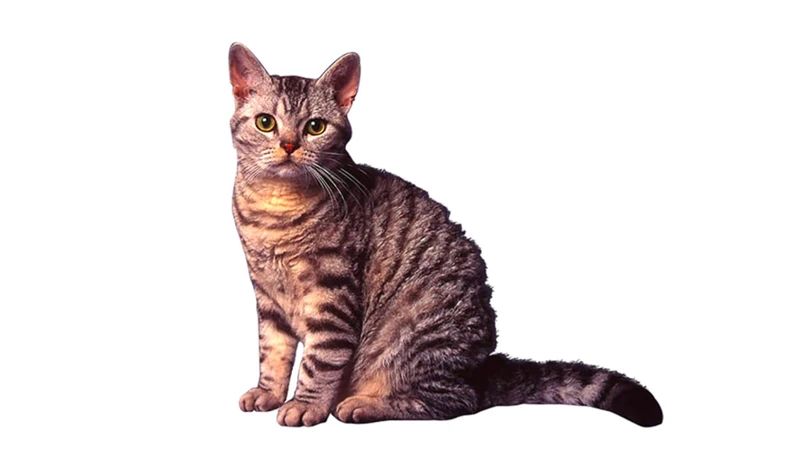
American Wirehair cats are known for their distinctive appearance and unique physical traits. These traits are the result of genetic inheritance, which is the passing down of traits from one generation to the next. In this section, we will take a closer look at the physical traits that are commonly found in American Wirehairs and how they are inherited.
The Wirehair Coat
One of the most distinguishable physical traits of American Wirehairs is their coat. Their fur is curly and wiry, with a springy texture that is different from other cat breeds. This unique coat is the result of a dominant gene mutation that occurred in the breed’s initial genetic pool. Cats with this gene have wirehair coats, and the gene will be passed down to their offspring. However, not all offspring will have wirehair coats, as it is not a guaranteed trait.
The Body Type
American Wirehairs have a sturdy, muscular build that is different from other cat breeds. This phenotype is the result of multiple genes working together to create a specific body type. For example, genes for a wide ribcage, broad shoulders, and strong legs all contribute to the breed’s unique body structure. This body type is also dominant, meaning that the genes responsible for it will be passed down to offspring with a high probability.
The Eye Color and Shape
While many cat breeds have blue eyes, American Wirehairs typically have gold or copper-colored eyes. These eye colors are dominant traits, meaning that most offspring will inherit them if one or both parents have them. Additionally, American Wirehairs have a unique eye shape that is almond-like and slightly slanted. This shape is also the result of genetic inheritance. Cats with this eye shape will pass it down to their offspring, but not all offspring will inherit this trait.
The physical traits of American Wirehairs are the result of complex genetic factors that can be inherited from one generation to the next. By understanding how these traits are inherited, breeders can predict the physical characteristics of offspring and create a breeding program that maintains the breed’s unique appearance and characteristics. However, it’s important to remember that some traits are not guaranteed, and variations can occur due to spontaneous genetic mutations.
The Wirehair Coat
American Wirehairs are a unique breed due to their distinct coat texture that cannot be found in any other cat breed. Their hair is thick and wiry, making it stand up from their body and giving them a slightly disheveled appearance. This unique fur type is the result of a specific genetic makeup that controls coat texture, which we will delve into in this section. Understanding the inheritance of the wirehair coat in American Wirehairs is essential for breeders and those looking to adopt this unusual feline. Let’s take a closer look at how genetics plays a role in the coat characteristics of these cats.
The Body Type
Just like any other breed, the American Wirehair breed has a distinct body type that distinguishes it from other cats. The body type of American Wirehairs is muscular and stocky, with a strong bone structure. They have broad shoulders, a deep chest, and powerful legs that make them very agile. Their body type enables them to be excellent hunters, and they are known for their ability to catch mice and other small rodents.
Aside from being muscular and stocky, American Wirehairs also have a distinct head shape. Their heads are wide and rounded with strong jaws and high cheekbones. They have a short muzzle and a strongly developed chin, which gives them a unique facial appearance. Their ears are medium-sized and slightly rounded at the tips, and they are set slightly apart from each other.
The body type of American Wirehairs is an important physical trait that is inherited from both parents. Inheritance of body type is determined by dominant and recessive genes. If one of the parents has a dominant gene for a certain body type trait, it is more likely that the offspring will inherit that trait. On the other hand, if the parents both carry the recessive gene for a different body type trait, the offspring may inherit that trait as well.
It is important to note that not all American Wirehairs will have the same body type. Some may be more muscular and stocky, while others may be leaner and more streamlined. The variations in body type among American Wirehairs are due to differences in their genetics.
Factors that influence the body type of American Wirehairs:
- Genetics: As mentioned earlier, the body type of American Wirehairs is determined by their genes. The genes that control body type can be dominant or recessive, and combinations of these genes can lead to different types of body shapes and sizes.
- Diet: Proper nutrition plays a vital role in the development of the American Wirehair body type. A balanced diet that is rich in protein and other essential nutrients can help maintain the muscularity and stockiness of this breed.
- Exercise: American Wirehairs are known for their high energy levels and love for physical activity. Regular exercise and playtime can help maintain their muscular and stocky body type.
- Environmental factors: The environment in which an American Wirehair lives can also play a role in its body type. Living in a spacious environment that promotes physical activity can help maintain the breed’s muscular and stocky appearance.
The body type of American Wirehairs is a unique physical trait that distinguishes them from other cats. Being muscular and stocky, with a strong bone structure, enables them to excel in hunting and other physical activities. The body type is inherited from both parents and is influenced by genetics, diet, exercise, and environmental factors.
The Eye Color and Shape
When it comes to American Wirehairs, their eye color and shape can vary greatly depending on their genetic makeup. It is important for breeders and owners to understand how inheritance works in order to predict the eye color and shape of potential offspring.
Eye Color:
Eye color is determined by multiple genes, making it a complex trait. However, the primary gene that controls eye color is called OCA2. This gene produces a protein that helps determine the amount and type of pigments in the eyes. In American Wirehairs, common eye colors include green, gold, and copper. However, it is also possible for some individuals to have blue or odd-colored eyes due to a genetic mutation.
Eye Shape:
Eye shape is also influenced by genetics, as certain genes control the development of the eye’s physical structure. American Wirehairs typically have almond-shaped eyes, which is a dominant trait. However, it is possible for some individuals to inherit a different eye shape due to recessive genes.
Predicting Eye Traits:
Predicting the eye color and shape of potential offspring can be done using Punnett squares, which are a handy tool for visualizing genetic combinations. By understanding the dominant and recessive genes involved in eye color and shape, breeders and owners can make informed decisions when it comes to breeding and selecting individuals for adoption.
It is important to note that eye color and shape are not the only factors to consider when choosing a cat. Health, temperament, and other physical traits should also be taken into account. By understanding the basics of inheritance and genetics in American Wirehairs, individuals can ensure that they make responsible and informed decisions when it comes to owning or breeding these beloved cats.
Predicting Offspring Traits with Punnett Squares
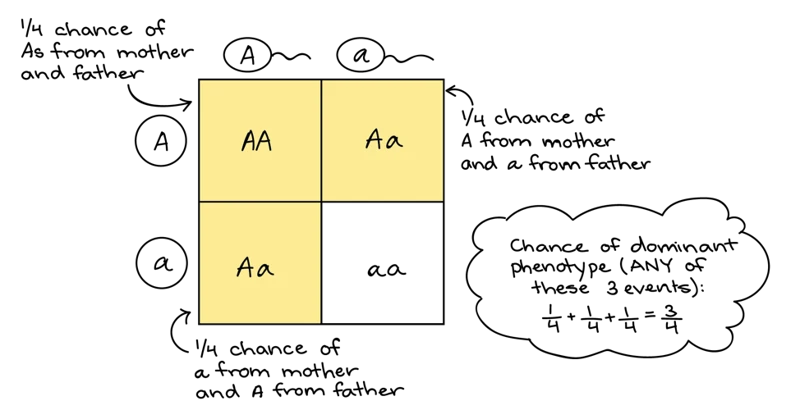
Predicting the traits of offspring is an important part of breeding any animal, and American Wirehairs are no exception. One popular and useful tool for predicting offspring traits is a Punnett Square.
What is a Punnett Square?
A Punnett Square is a diagram used to predict the possible outcomes of breeding between two individuals. It is named after Reginald Punnett, who developed the concept in the early 20th century. The Square consists of a grid with two columns and two rows, and each box in the grid represents a possible combination of alleles from the two parents.
How to Use a Punnett Square to Predict Offspring Traits in American Wirehairs
To use a Punnett Square, you first need to know the genotype of the parents. This means you need to know which alleles they carry for a particular trait. For example, if you wanted to predict the coat color of the offspring, you would need to know whether the parents carry the dominant allele (like solid or tabby) or the recessive allele (like white or dilute).
Once you know the genotype of the parents, you can write their alleles along the top and left-hand side of the Square. For example, if you wanted to predict the coat color of the offspring of two American Wirehairs, one of which was homozygous dominant (SS) for solid coat color and the other heterozygous (Ss) for solid coat color, you would write S along the top of the Square and S along the left-hand side, and s in the remaining boxes.
Then, you simply need to fill in the boxes with the possible combinations of alleles that the offspring could inherit from their parents. This will give you a visual representation of the possible genotypes and phenotypes of the offspring.
Examples of Punnett Squares with Different Traits
Punnett Squares can be used to predict the inheritance of any trait that is controlled by one or more genes. For example, if you wanted to predict the inheritance of the folded ear trait in Scottish Folds, you would need to know whether both parents carry at least one copy of the dominant allele (Fd) or whether one or both parents carry two copies of the recessive allele (fd).
Another example is the inheritance of eye color in dogs. If you wanted to predict the eye color of the offspring of two dogs, one with brown eyes (bb) and one with blue eyes (BB), you would write B along the top of the Square and b along the left-hand side, and fill in the boxes with the possible combinations of alleles (Bb and Bb).
In conclusion
Punnett Squares are a valuable tool for breeders and geneticists to predict the inheritance of traits in offspring. While they cannot predict the exact traits of any one individual, they provide a useful insight into the possible outcomes of breeding between two individuals with known genotypes. By using Punnett Squares, breeders can make informed decisions about which animals to breed together in order to produce the desired traits in their offspring.
What is a Punnett Square?
Have you ever wondered how scientists predict the likelihood of certain physical traits appearing in the offspring of two American Wirehairs? That’s where Punnett squares come in. A Punnett square is a tool invented by geneticist Reginald Punnett in the early 20th century to help visualize the probabilities of passing on certain genes from parents to offspring. This square grid has become a fundamental tool for geneticists and cat breeders alike in predicting offspring traits and understanding inheritance patterns. But how does it work? Let’s take a closer look.
How to Use a Punnett Square to Predict Offspring Traits in American Wirehairs
Using a Punnett square is a valuable tool for predicting the traits that offspring of two American Wirehairs may inherit. To use a Punnett square, follow these steps:
- Make a list of the parents’ genotypes for a particular trait. For example, if you want to know the likelihood that two American Wirehairs will produce offspring with wirehair coats, list the genotype of each parent for that trait.
- Write each parent’s genotype at the top of a separate column of the Punnett square.
- Write each parent’s genotype on the left side of a separate row of the Punnett square.
- Fill in the boxes of the Punnett square by combining the allele from the corresponding column with the allele from the corresponding row.
- Count the number of times each possible genotype appears in the Punnett square by adding up the number of boxes that have that genotype combination.
- Use the number of boxes to determine the probability of each genotype appearing in the offspring.
For example:
Let’s use the example of two American Wirehairs with brown eyes, but one parent has a homozygous dominant genotype for having normal-shaped eyes (EE) and the other has a heterozygous genotype for having normal shaped eyes (Ee).
1. Write out the genotypes for each parent:
– Parent 1 (EE)
– Parent 2 (Ee)
2. Draw out the Punnett Square:
| | E | e |
|—-|—|—|
| E | EE | Ee |
| e | Ee | ee |
3. Fill in the boxes:
– Top left box: EE (offspring will have normal-shaped eyes)
– Top right box: Ee (offspring will have normal-shaped eyes)
– Bottom left box: Ee (offspring will have normal-shaped eyes)
– Bottom right box: ee (offspring will have almond-shaped eyes)
4. Count the number of each genotype:
– EE: 1
– Ee: 2
– ee: 1
5. Calculate the probability of each genotype:
– EE: 25% chance of offspring having this genotype
– Ee: 50% chance of offspring having this genotype
– ee: 25% chance of offspring having this genotype
Using a Punnett square can help breeders and owners determine the likelihood of certain physical traits appearing in their American Wirehair’s offspring. It is important to remember that these predictions are based on probability and not a guarantee of what traits the offspring will have.
Examples of Punnett Squares with Different Traits
When predicting the inheritance of traits in American Wirehairs, Punnett Squares can be an incredibly useful tool. Let’s explore a few examples of Punnett Squares with different traits.
Coat Color: Coat color is one of the most noticeable traits in American Wirehairs. This breed can have a variety of colors including black, white, silver, and brown. Let’s look at an example of how coat color is inherited.
Assuming the dominant trait is black and the recessive trait is white, if we breed two American Wirehairs with the following genotypes: Bb (black) x bb (white), the Punnett Square would look like this:
- Bb | bb
- ———|———-
- Bb | Bb | bb
- Bb | Bb | bb
In this example, there is a 50% chance the offspring will inherit the dominant black coat color (Bb), and a 50% chance they will inherit the recessive white coat color (bb).
Body Type: American Wirehairs have a distinctive body type that is different from other breeds. They are muscular and have a stocky build. The inheritance of body type is a bit more complex than coat color, but Punnett Squares can still be used to predict possible outcomes.
Assuming the dominant trait is stocky build (S) and the recessive trait is lean build (s), if we breed two American Wirehairs with the following genotypes: Ss (stocky) x Ss (stocky), the Punnett Square would look like this:
- Ss | Ss
- ———|———-
- Ss | SS | Ss
- Ss | Ss | ss
In this example, there is a 75% chance the offspring will inherit the dominant stocky build (SS or Ss), and a 25% chance they will inherit the recessive lean build (ss).
Eye Color and Shape: Another unique trait of American Wirehairs is their distinctive eye shape and color. They have large, round eyes that are typically gold, copper, or green in color. Here is an example of how eye color and shape can be inherited.
Assuming the dominant trait is round eyes (R) and the recessive trait is almond-shaped eyes (r), and the dominant trait is gold eyes (G) and the recessive trait is green eyes (g), if we breed two American Wirehairs with the following genotypes: RrGg (round gold) x RrGg (round gold), the Punnett Square would look like this:
- RrGg | RrGg
- ———|———-
- RrGg | RRGG | RRGg | RrGG | RrGg | RRgg | Rrgg
- RrGg | RRGg | RRgg | RrGg | Rrgg | Rrgg | rrgg
In this example, there is a 9/16 chance the offspring’s eyes will be round and gold (RRGG, RRGg, RrGG, RrGg), a 3/16 chance the offspring’s eyes will be round and green (RRgg, Rrgg, Rrgg), a 3/16 chance the offspring’s eyes will be almond-shaped and gold (RRGg, RrGg, rrgg), and a 1/16 chance the offspring’s eyes will be almond-shaped and green (rrgg).
These example Punnett Squares demonstrate how genetics and inheritance work in American Wirehairs and can be helpful for predicting the traits of offspring.
Genetic Testing for American Wirehair Breeders
Breeding American Wirehairs can be an incredibly rewarding experience, but it can also be fraught with potential genetic health issues. As a responsible breeder, it’s essential to ensure the health and welfare of your cats, which is where genetic testing comes into play.
Why Genetic Testing is Important for Breeders
Genetic testing can help identify potential health issues that could arise in a litter. By testing for known genetic mutations, breeders can make informed decisions about which cats to breed, which can help reduce the incidence of genetic health problems in future generations.
Additionally, genetic testing can help breeders avoid breeding cats with inherited diseases that could be passed down to their offspring. This can help ensure that the cats produced are healthy and have the best possible chance of living a long, happy life.
Common Genetic Health Issues in American Wirehairs
There are several genetic health issues that can affect American Wirehairs. Some of the most common issues include polycystic kidney disease (PKD), hypertrophic cardiomyopathy (HCM), and progressive retinal atrophy (PRA).
PKD is a condition where cysts develop in the kidneys, leading to kidney failure. HCM is a heart disease that can cause sudden death, while PRA is a degenerative eye disease that can lead to blindness.
Types of Genetic Tests Available and How to Interpret Results
There are several types of genetic tests available for American Wirehairs, and each test looks for a specific genetic mutation that can cause a particular health issue. Some of the most common tests include PKD screening, HCM screening, and PRA screening.
When you receive the results of a genetic test, they will typically indicate whether your cat has tested positive or negative for the genetic mutation in question. If your cat tests positive, it means they are likely to develop the associated health issue, so you should avoid breeding them. If your cat tests negative, it means they are unlikely to develop the health issue, so you can consider them for breeding.
It’s important to note that while genetic testing can help identify potential health issues, it’s not a guarantee that a cat will or won’t develop a particular condition. However, by using genetic testing as a tool, breeders can help reduce the incidence of genetic health issues in their cats and produce healthy, happy kittens.
Conclusion
Genetic testing is an essential tool for American Wirehair breeders looking to produce healthy, happy kittens. By testing for known genetic mutations and using the results to inform breeding decisions, breeders can help reduce the incidence of genetic health issues in their cats and improve the overall health and welfare of the breed.
Why Genetic Testing is Important for Breeders
As a breeder of American Wirehairs, it’s essential to prioritize the healthy breeding of these beautiful cats. While genetics are complex and often difficult to decipher, understanding the importance of genetic testing cannot be overstated. Through genetic testing, breeders can identify potential health issues and make informed decisions about the best breeding matches for their cats. Without genetic testing, breeders may unknowingly pass on harmful genetic mutations to their cats’ offspring, resulting in negative health outcomes. In this section, we’ll explore the significance of genetic testing for American Wirehair breeders and the benefits it provides in promoting a healthy breeding program.
Common Genetic Health Issues in American Wirehairs
As with many purebred cat breeds, American Wirehairs are prone to certain genetic health issues that potential owners and breeders should be aware of. It is important to work with reputable breeders who prioritize genetic testing and proper breeding practices to minimize the risk of passing on these health issues to offspring.
Here are some common genetic health issues that have been observed in American Wirehairs:
| Health Issue | Description |
|---|---|
| Polycystic kidney disease (PKD) | A genetic disorder that causes the development of fluid-filled cysts in the kidneys, eventually leading to kidney failure. PKD can be detected through genetic testing and should be screened for in breeding cats. |
| Hypertrophic cardiomyopathy (HCM) | A heart condition in which the muscles of the heart become abnormally thick, making it difficult for the heart to pump blood effectively. HCM can be inherited from one or both parents and should be screened for through genetic testing and regular cardiac ultrasounds. |
| Progressive retinal atrophy (PRA) | A group of genetic diseases that cause degeneration of the retina, leading to progressive vision loss and eventual blindness. There is currently no cure for PRA, but it can be detected through genetic testing and should be screened for in breeding cats. |
| Patellar luxation | A condition in which the kneecap dislocates from its normal position. This can cause pain, limping, and difficulty walking. Patellar luxation has a genetic component and should be screened for in breeding cats. |
| Pyruvate kinase deficiency (PKD) | A blood disorder that affects the red blood cells, causing them to break down more easily than normal. This can lead to anemia, jaundice, and other health problems. PKD can be detected through genetic testing and should be screened for in breeding cats. |
It is important to note that not all American Wirehairs will develop these health issues, and responsible breeding practices can help to minimize the risk of passing them on to future generations. Genetic testing and screening should be a top priority for breeders, and potential owners should inquire about the health history and genetic testing results of any cat they are considering adopting.
Types of Genetic Tests Available and How to Interpret Results
Genetic testing is an important tool for American Wirehair breeders to determine potential genetic health issues in their cats. Below are some of the most common types of genetic tests and how to interpret the results.
- DNA Testing: This test is used to identify any genetic mutations or abnormalities in an American Wirehair’s DNA. Breeders can use this test to check for potential genetic health issues, such as Hypertrophic Cardiomyopathy (HCM) or Polycystic Kidney Disease (PKD). Results are usually provided as either “positive” or “negative”, indicating whether or not the cat is a carrier of the mutation.
- Health Screening: This test is used to evaluate an American Wirehair for any signs of current or potential health issues. This may include blood tests, x-rays, or ultrasounds to check for any abnormalities or conditions. Breeders should consult with their veterinarian to determine which specific tests are recommended.
- Inbreeding Coefficient: This test is used to determine how closely related two cats are within a given breeding program. The inbreeding coefficient is calculated based on the number of shared ancestors within a specified number of generations. Breeders should aim for a lower inbreeding coefficient to reduce the risk of genetic health issues.
- Carrier Testing: This test is used to determine whether or not an American Wirehair is a carrier of a specific genetic mutation, without showing signs of the condition themselves. Breeders can use this information to make informed breeding decisions and reduce the risk of passing on genetic health issues to future litters. Results are usually provided as “positive”, “negative”, or “carrier”. If a cat is found to be a carrier, breeders should avoid mating them with another carrier to reduce the risk of passing on the mutation.
- Genetic Diversity Testing: This test is used to evaluate the genetic diversity of an American Wirehair. A more diverse gene pool can reduce the risk of genetic health issues and promote overall health and longevity. Results may be provided as a percentage or coefficient, indicating the level of genetic diversity present.
It is important for breeders to work with a veterinarian or genetic counselor to interpret the results of these tests and make informed breeding decisions. While genetic testing can provide valuable information, it should be used in conjunction with other factors such as physical health, temperament, and temperament testing to ensure the production of healthy, well-rounded American Wirehairs.
Understanding Inheritance in American Wirehairs – A Conclusion
Understanding inheritance in American Wirehairs is essential for breeders and owners alike. It not only helps in predicting the physical traits of future offspring but also aids in identifying and preventing genetic health issues. Through this article, we have grasped the basics of genetics and inheritance, types of inheritance, physical traits of American Wirehairs, and the use of Punnett squares for predicting offspring traits.
It is important to remember that no two American Wirehairs are the same, and genetics is just one aspect that contributes to their individuality. Other factors such as environmental conditions, nutrition, and health also play a crucial role. Genetics is an ever-evolving field, and new discoveries are made every day. It is vital to keep up-to-date with the latest information and advancements.
Breeders play a crucial role in maintaining and improving the American Wirehair breed. By understanding inheritance and genetic testing, they can ensure that they produce healthy and genetically sound litters. It is recommended that breeders conduct genetic testing on their cats before breeding and make informed decisions about the pairing based on the results.
Owners can benefit from understanding inheritance as well. By knowing the physical traits and potential health issues associated with the breed, they can provide better care for their cats. For instance, American Wirehairs require frequent grooming to maintain their coat, which can be helpful to know for owners who are considering getting this breed.
Understanding inheritance in American Wirehairs is a crucial aspect of cat breeding and ownership. It allows us to predict future offspring traits and identify potential health issues. By keeping ourselves informed and up-to-date, we can ensure that American Wirehairs remain a healthy and unique breed.
Frequently Asked Questions
What is the difference between genotype and phenotype?
Genotype refers to an individual’s genetic makeup, while phenotype refers to an individual’s physical traits.
Can physical traits be determined solely by genetics?
No, environmental factors can also play a role in determining physical traits.
Is it possible for offspring to have physical traits that neither parent possesses?
Yes, mutations and genetic recombination can lead to offspring having unique physical traits.
What is a genetic mutation?
A genetic mutation is a change in the DNA sequence that can lead to alterations in an individual’s physical traits.
What is the difference between dominant and recessive genes?
Dominant genes will always be expressed in an individual’s physical traits, while recessive genes will only be expressed if an individual has two copies of the recessive gene.
Can genetic testing predict the exact physical traits of offspring?
No, genetic testing can only provide probability estimates based on the inheritance patterns of specific genes.
What are some common genetic health issues in American Wirehairs?
Some common genetic health issues in American Wirehairs include hypertrophic cardiomyopathy, polycystic kidney disease, and hip dysplasia.
What is a Punnett square used for?
A Punnett square is used to predict the probability of offspring inheriting specific genes from their parents.
Why is it important for American Wirehair breeders to use genetic testing?
Genetic testing can help breeders identify carriers of genetic health issues and prevent the spread of those issues through their breeding programs.
Can understanding genetics help improve the overall health and longevity of the American Wirehair breed?
Yes, by identifying and selecting for healthy genetic traits, breeders can work to improve the overall health and longevity of the American Wirehair breed.

